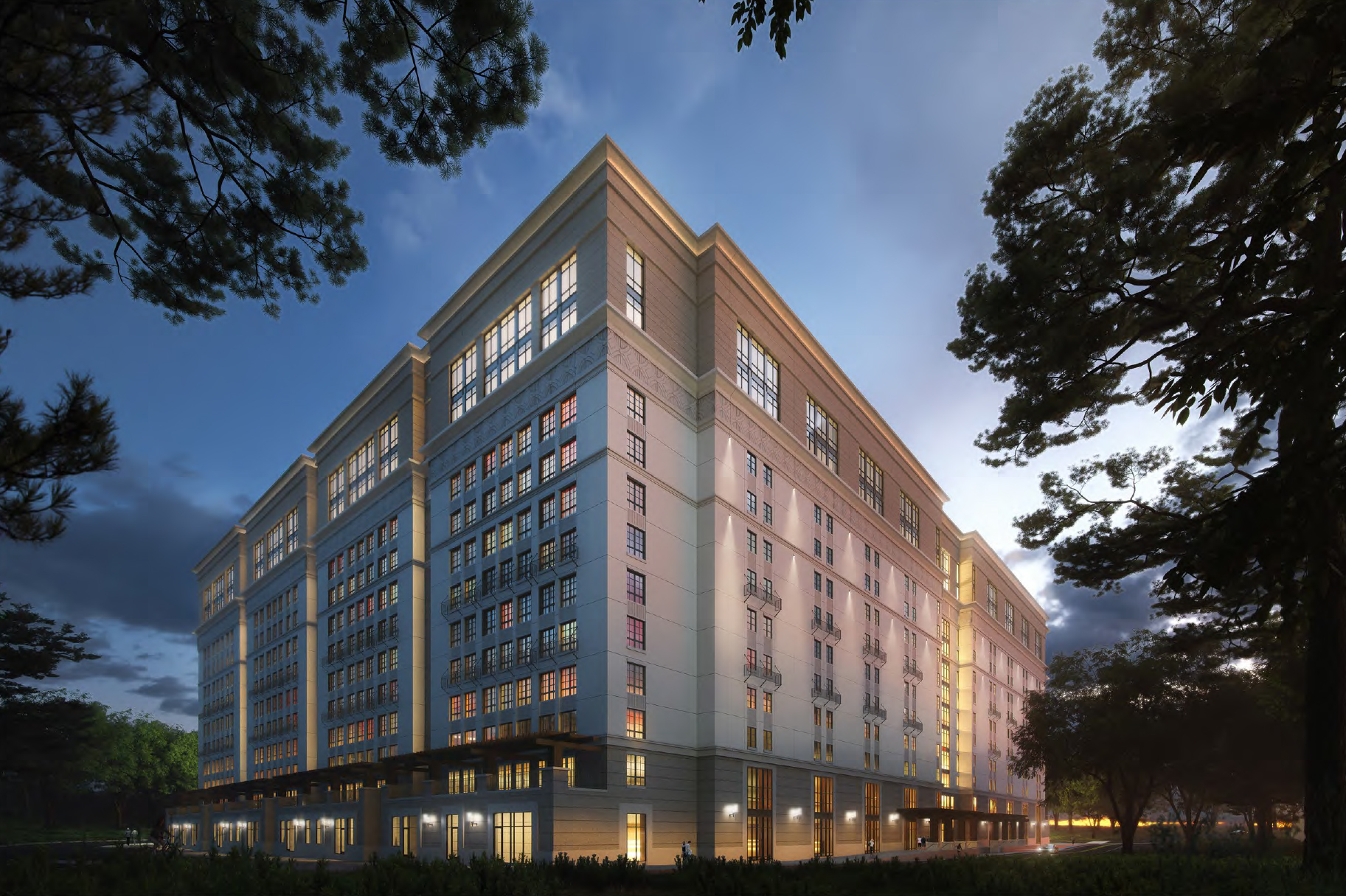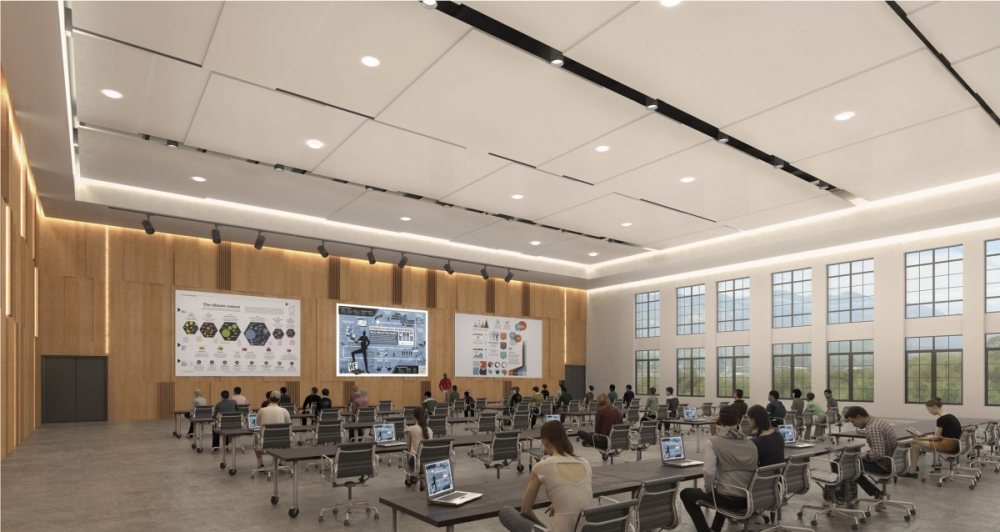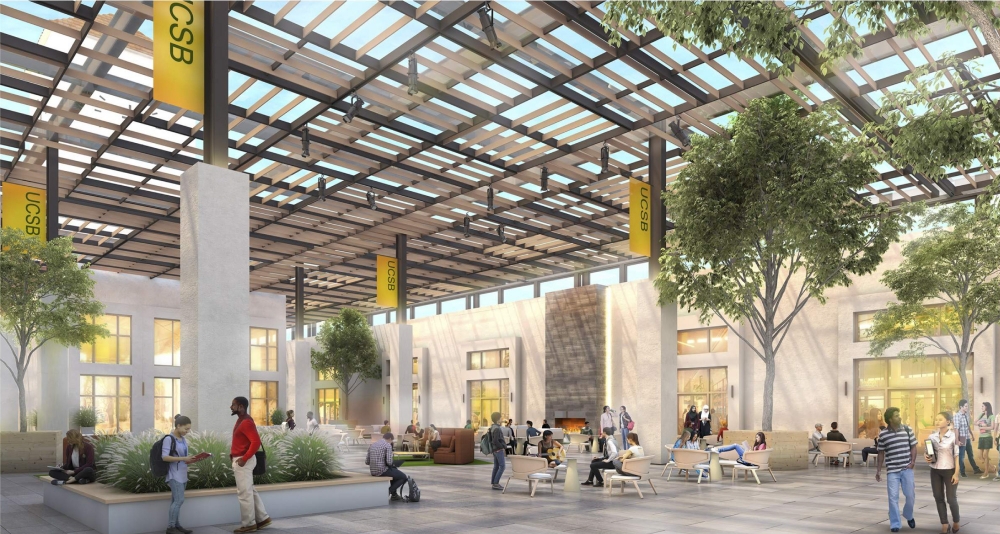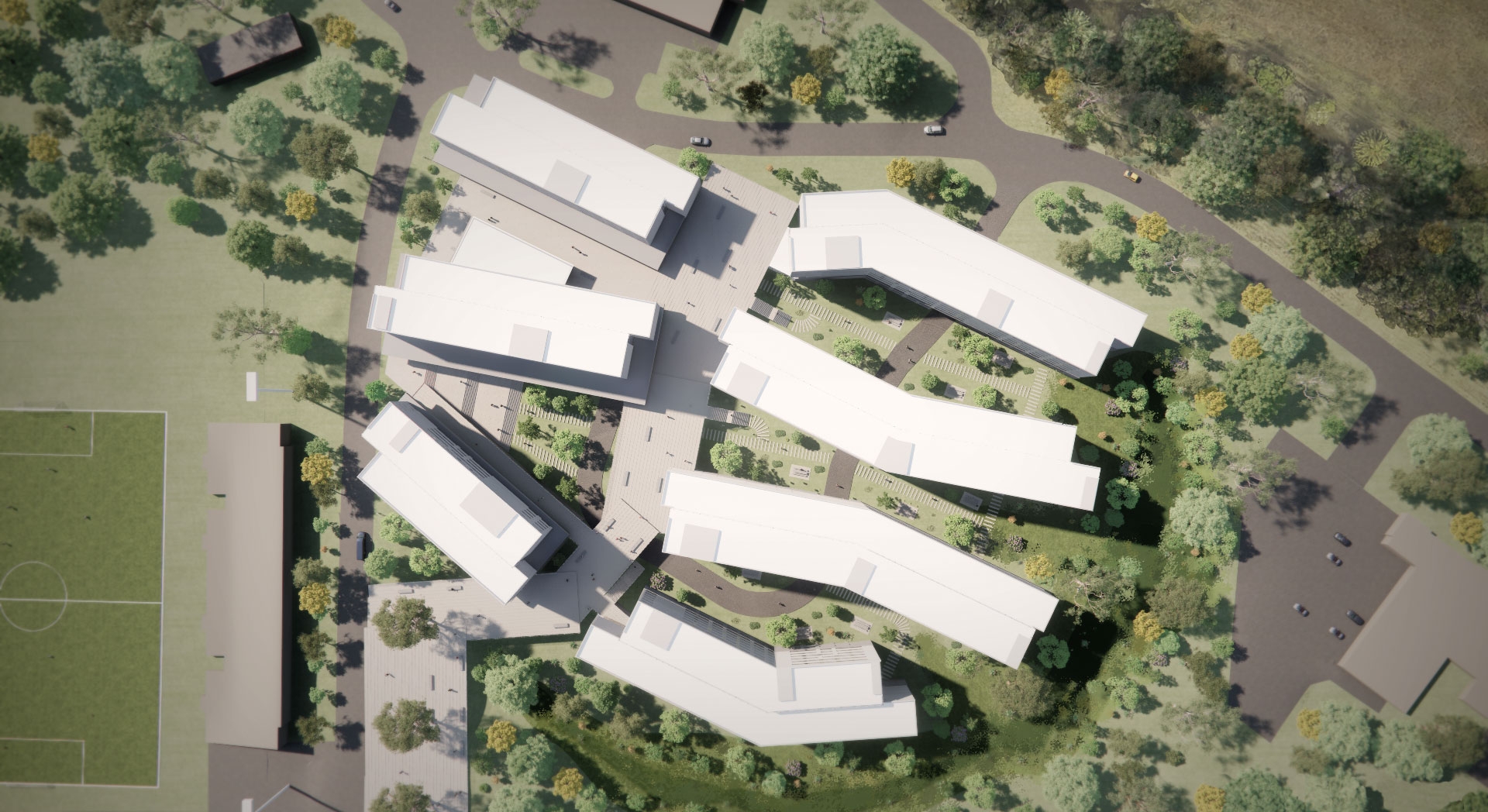‘Absolutely Stunning’
Taking a key step to advance a project that will transform the campus residential experience — and the campus itself — UC Santa Barbara has released a notice of preparation for a new student housing development. The building was previously approved as part of the university’s Long Range Development Plan.
Munger Hall — a joint venture between the university and philanthropist Charles Munger — will fulfill the university’s commitment to provide not only more student housing, but housing that is both better and more affordable for students. It will do so with flourish and elegance. Increasing existing housing by 50% with single-occupancy rooms, the development’s visionary design elements are meant to maximize individual space for students and provide a living environment unparalleled in undergraduate housing, firmly planting the campus at the cutting edge of such construction.
“We are deeply grateful to Charlie Munger for his vision, his leadership, and his commitment to creating a living and learning environment that will further support the academic success and personal well-being of our students,” said Chancellor Henry T. Yang. “His inspired and revolutionary design concept for our new housing project will benefit the students who live there, as well as our entire campus and the greater community. With an abundance of academic space that includes study areas, meeting rooms and lecture halls, and a wealth of social spaces that bring students together in community with one another, Munger Hall will offer an unprecedented residential experience.”
The building will be situated near Harder Stadium off Mesa Road, on a site currently occupied by the university’s Facilities Management division. That group will relocate to a business park in Goleta.
Residents of Munger Hall will be drawn from existing enrollment, providing the opportunity for more students to live right on the main campus in solo occupancy rooms rather than in surrounding communities. In addition, once the new building is completed, the university will be able to eliminate triple rooms in all its other residence halls.
Munger Hall demonstrates UC Santa Barbara’s commitment to housing students in quality and cost-effective accommodations as a net benefit to the students, the campus and the community.
The university’s 2010 Long Range Development Plan called for an increase in enrollments, with the construction of new housing (beds) to accommodate an additional 5,000 students. The Munger project will deliver on that goal. It also redistributes students in existing housing and provides much-improved accommodations and amenities than are normally available to students.
Every resident will have their own private bedroom within fully furnished suites and “houses” — 8 rooms to a suite, and 8 suites to a house — featuring shared amenities including fully outfitted kitchens, Smart TV’s, laundry rooms, study spaces and lounge areas. The building will have an entire floor dedicated to additional shared amenities and spaces, such as a fitness center, a demonstration kitchen, a café, a market and other retail space, and a full-service restaurant that also provide student employment opportunities. Program leisure space will feature a recreation room, a reading room, conference rooms, music practice space, and a lecture hall. The first floor will include student services and classrooms, utility rooms, live-in staff apartments and a grand lobby entrance.
The design of the project, as well as how it will be built, can be credited to Munger’s own sweeping and inspired vision for the university’s new student housing. The outcomes he has detailed from the start of his joint venture with UC Santa Barbara specify everything from building materials to ventilation, to improving student happiness and educational effectiveness, to the many academic spaces amenities it will offer — all much more affordable, and much better, than is typical for such endeavors.
Munger has characterized the design as “our version of ship architecture on land” for its efficient use of space and for being all-inclusive — nearly everything a resident could want or need is available on site. He has said his primary goal for the building is that it ultimately be “so much better than normal that it will become widely admired as among the best.”
The building design and construction is as impressive as its amenities, with sustainability front and center: the project is currently tracking for LEED gold status from the U.S. Green Building Council. Heating and hot water will be all-electric and connected to the campuswide chilled water loop (versus burning natural gas), in alignment with the 2020 UC Policy on Sustainable Practices standard that no new building use onsite fossil fuel combustion for space and water heating. Access to public transit and transportation alternatives also are among sustainability goals for the project, with new bike paths, sidewalks and two new bus stops being designed to connect the building’s population to the broader campus circulation network. The spectacular top floor, which will include a landscaped courtyard atop the building, will have a translucent roof that will provide natural lighting, natural ventilation and an open view of the sky, the ocean and the mountains.
And then there is the construction process itself, which is considered revolutionary for this type of project. The modular residential units will be prefabricated elsewhere then installed on the building foundation at a pace of about 25 pods per week; an entire residential floor of the building will require only 20 working days of construction. That lends the design significant added value in time saved; traditional construction typically requires builders on-site for an extended length of time — and well beyond what will be needed for Munger Hall.
Cost savings also are expected to be significant with this state-of-the-art construction method, which could become a model for universities around the country.
The project design maximizes the proximity of services and amenities for the students, according to Mr. Munger, and gives UC Santa Barbara a “marvelous opportunity to gain an advantage” in student recruitment and retention.
Filing the notice of preparation is the latest step in an ongoing planning process for the new building that has been rigorous — and continuous.
The university also has affirmed its intent to conduct an Environmental Impact Report (EIR) as required by the California Environmental Quality Act — an important milestone in the project entitlement process.
The EIR will take several months to complete; any impacts that are identified will be categorized based on the level of mitigation required. Once a complete draft report is issued, it will include any concerns or comments raised by the public. The report will eventually have to be certified by the UC Regents and the California Coastal Commission.
A public comment period for providing written feedback is open now and will conclude Friday, August 13, at 5 p.m. The community also will have opportunities to comment at public hearings during the EIR process. The first of these, a public scoping meeting, will be held July 28, from 6 to 7:30 p.m. via Zoom. More information and the link can be found at bap.ucsb.edu/mungerhousing.
Two other campus building projects are also moving forward. Approximately 70 additional units of for-sale faculty housing are currently under construction. And plans for the Ocean Road faculty and staff housing project are proceeding. The Ocean Road project will include 540 for-sale and rental housing units for faculty and staff. All proposed faculty and staff housing will be phased to meet anticipated demand.
Once Ocean Road is completed, UCSB is planning to build four additional housing developments on four planned redevelopment sites: the West Campus Apartments, Devereux, Storke Apartments and Santa Ynez Apartments. These projects will replace existing student housing capacity within each site, and construct remaining needed faculty and staff housing units.






